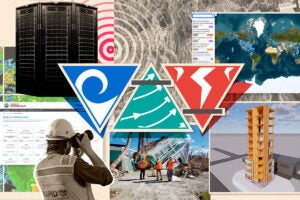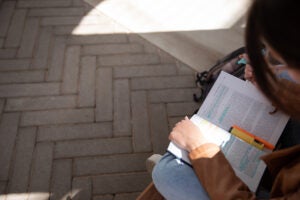AUSTIN, Texas—University of Texas civil engineering professor Dr. Randy Machemehl has spent his career studying traffic congestion in Texas cities. And he has one thought for those who yearn for the time decades ago when traffic was not an issue. Machemehl’s thought: it will never be that way again.
“I don’t think there’s any panacea out there that’s going to totally get rid of our traffic problems,” he said. “Everything we do is not going to take us back to 30 years ago.”
Texas cities are not unique, he said. Congestion problems are not completely resolved anywhere. But Austin may have a more difficult time than most cities, he said, because it is such a socially and politically active place. Infrastructure issues have traditionally been unpopular here.
Most of Machemehl’s work is funded by the Texas Department of Transportation (TXDOT), which is noted for its emphasis on research.
He has spent much of the past three years working on congestion issues on Mopac Boulevard or Loop 1. One bottleneck he has helped relieve is at southbound Mopac at the Barton Creek Mall exit. Before last fall, the highway was reduced from three lanes to two after that exit, creating a serious traffic tie-up.
Machemehl recommended that the paved shoulder on the south of the exit ramp be turned into a third lane. The road was re-striped and traffic congestion has been reduced. Delays have been reduced by more than half, with annual savings to motorists of $500,000 (in terms of time and vehicle cost savings.)
As for congestion at peak afternoon hours from 1st and 6th streets to northbound Mopac, Machemehl believes the answer is installing ramp meters (traffic lights at on-ramps), which may be unpopular with the driving public, but are effective.
“Getting people to change their behavior is part of the solution and ramp meters change behavior,” he said. Ramp meters back up traffic even more than it already is, so drivers search for alternate routes. Or they travel earlier or later.
Finding alternate routes in Austin is a challenge because the city has what Machemehl calls an “immature network.” The city’s east-west capacity is deficient so the north-south corridors are overloaded. Interstate 35, U.S. 183 and Loop 1 are bearing the brunt of Austin’s commuting troubles.
The University of Texas and the state office complex downtown are perhaps the biggest traffic generators. When school is under way, there may be 50,000 students and 20,000 faculty and staff on campus. Likewise, when the Legislature is in session, there may be 15,000 people traveling downtown to the capitol area.
Fortunately for UT students, the campus shuttle system handles much of the influx from apartment complexes and residential areas throughout Austin. The system is also successful because there is a shortage of campus parking and students are forced to use the shuttle.
Machemehl said he rides the bus to work two days a week, but there are some days when he needs a vehicle during work hours and he must drive. The same is true for many Austin workers who also may be reluctant to use the city bus because of the length of time it takes to get to their destination.
Coping with Austin’s traffic issues in the future will mean making policy decisions on how the city will develop.
“If we want a world in which we travel by automobile, the more spread out we are, the better,” Machemehl said. “If we want a world in which mass transit is the dominant travel mode, it will be better to have high density development” along mass transit routes. That will mean more apartment complexes in urban areas and less focus on developing single family dwellings in suburban areas.
Beyond the policy decisions that must be made, there are three traffic congestion remedies that need to be put in place. The most common approach, Machemehl said, is adding additional road capacity ¬ adding new lanes and new highways. TXDOT is planning several toll roads to relieve the strain on Interstate 35.
Also on the drawing board are High Occupancy Vehicle (HOV) lanes on I-35. Motorists can only use an HOV lane if they have at least one passenger in their vehicle or if they are riding a bus.
Machemehl said people are more likely to go through the inconvenience of carpooling or riding a bus if those options are an improvement over sitting in traffic for long periods of time. Travel demand modification, which includes such activities as carpooling and taking the bus, he said, is the second aspect of controlling traffic congestion.
The third remedy is demand reduction ¬ reducing the number of trips made on highways and streets. Demand reduction is achieved through telecommuting, home shopping with catalogs, television and the Internet, and flextime for employees.
Machemehl said he has not worked on traffic issues specifically related to the new Austin-Bergstrom International Airport, but he does not expect the new airport site to cause an immediate major traffic crisis. Flight arrivals and departures are staggered at airports; so there will be increased traffic to southeast Austin but the increased demand will be distributed among many daily hours.



